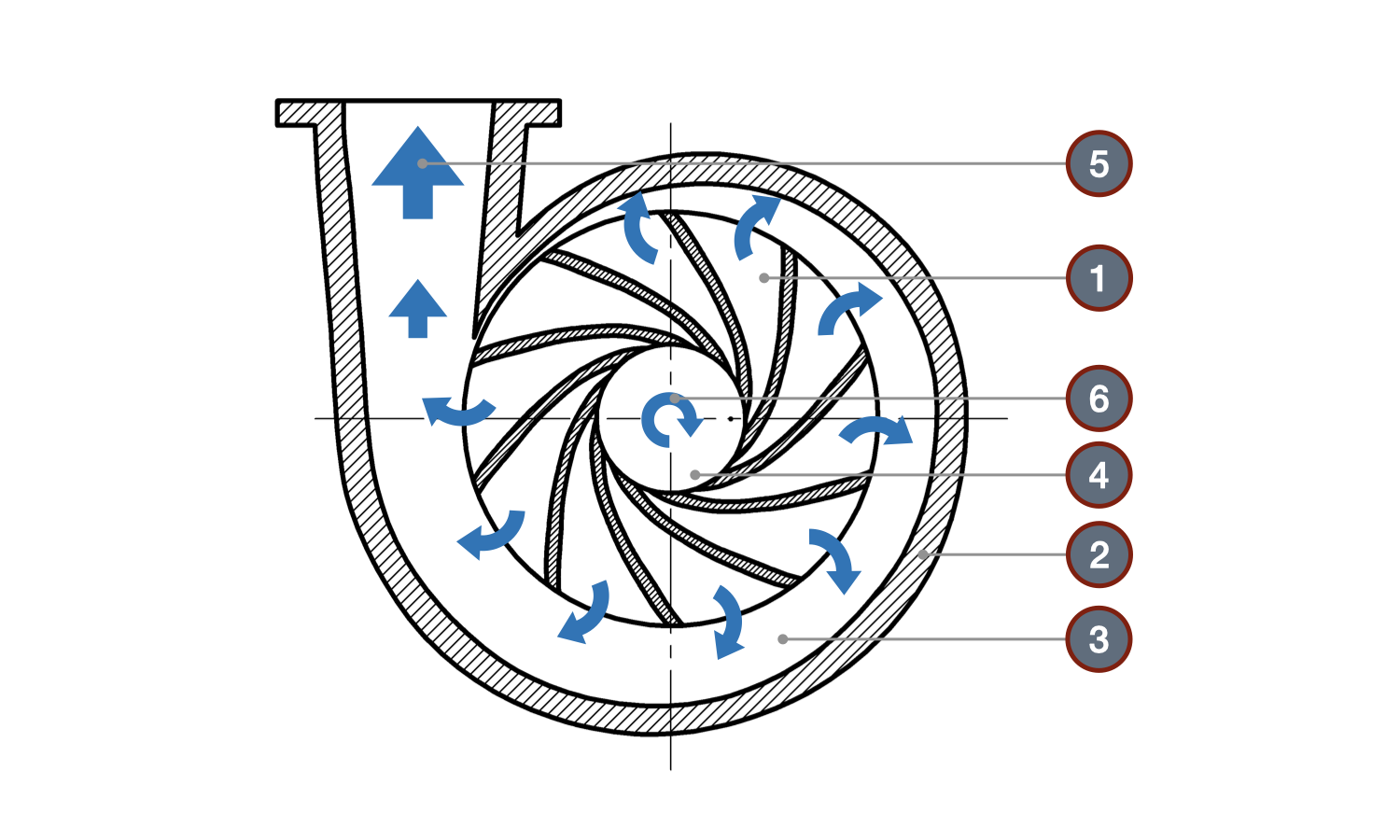Please do not block ads on our site. Clicks on ads help us exist, grow and become more useful for you!
How does a circulation pump work
- 1 - Impeller
- 2 - Pump casing
- 3 - Diffuser
- 4 - Fluid inlet
- 5 - Fluid outlet
- 6 - Direction of rotation
The operating principle of the circulation pump is based on the use of centrifugal force. The impeller with radially bent blades is mounted on the motor shaft. Water from the suction pipe enters the center of the rotating impeller and, under the action of inertia forces (centrifugal force), is thrown along the blades to its periphery.
On the outlet side of the impeller, water enters the spiral channel in the form of a diffuser, where the kinetic energy transferred to the water from the impeller is converted into potential energy, increasing its static pressure.
In wet rotor circulation pumps, the motor rotor rotates directly in the pumped water, which simultaneously performs the function of cooling and lubricating the radial thrust sliding bearings.
Centrifugal pumps have a rigid dependence of performance parameters on the rotational speed and diameter of the impeller:
- The change in pump flow rate is proportional to the change in impeller rotation speed.
- The change in pump head is proportional to the square of the change in impeller rotation speed.
- The power consumed by the pump shaft is proportional to the cube of the change in impeller rotation speed.
- The pump flow rate and head vary proportionally to the square of the change in impeller diameter.
question : comment : feedback
420
 Catalog of
Catalog of circulation pumps
DAB
DAB
DAB
DAB
Wilo
Wilo
Wilo
Wilo
IMP Pumps
IMP Pumps
IMP Pumps
IMP Pumps
IMP Pumps
Calpeda
Calpeda
Calpeda
Calpeda
Calpeda
Grundfos
Wilo
Wilo
Wilo
Wilo
Wilo
Calpeda
Calpeda
Grundfos
Grundfos
Grundfos
Grundfos
Grundfos
DAB
DAB
Smedegaard
Smedegaard
Smedegaard
Lowara
Lowara
Lowara
Lowara
Lowara
IMP Pumps









 Tutorial Grundfos
Tutorial Grundfos
